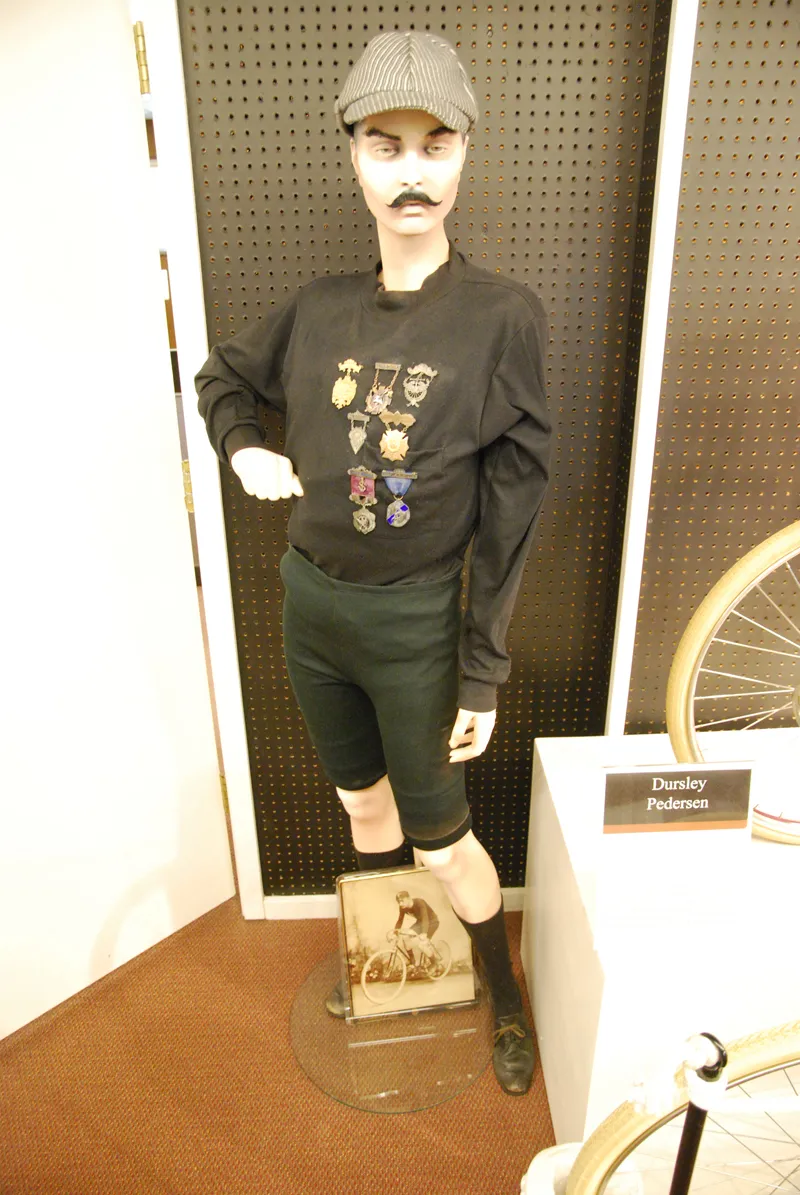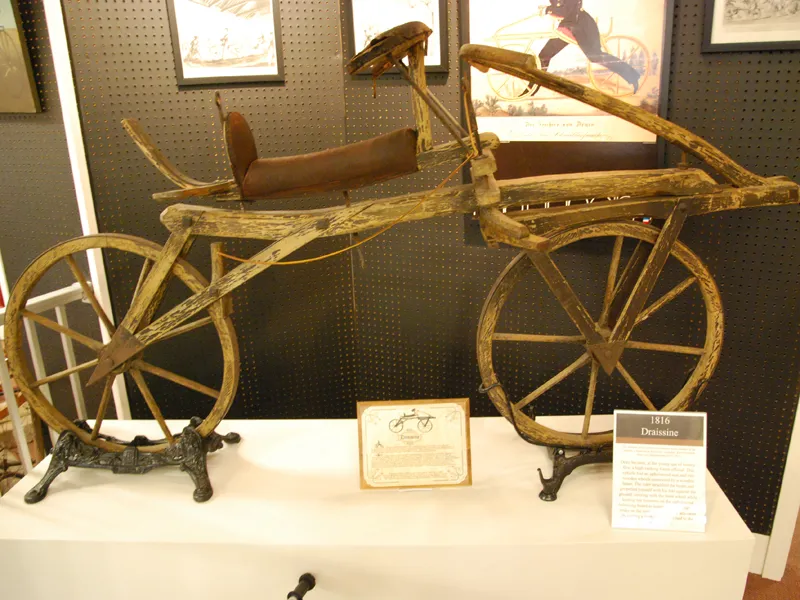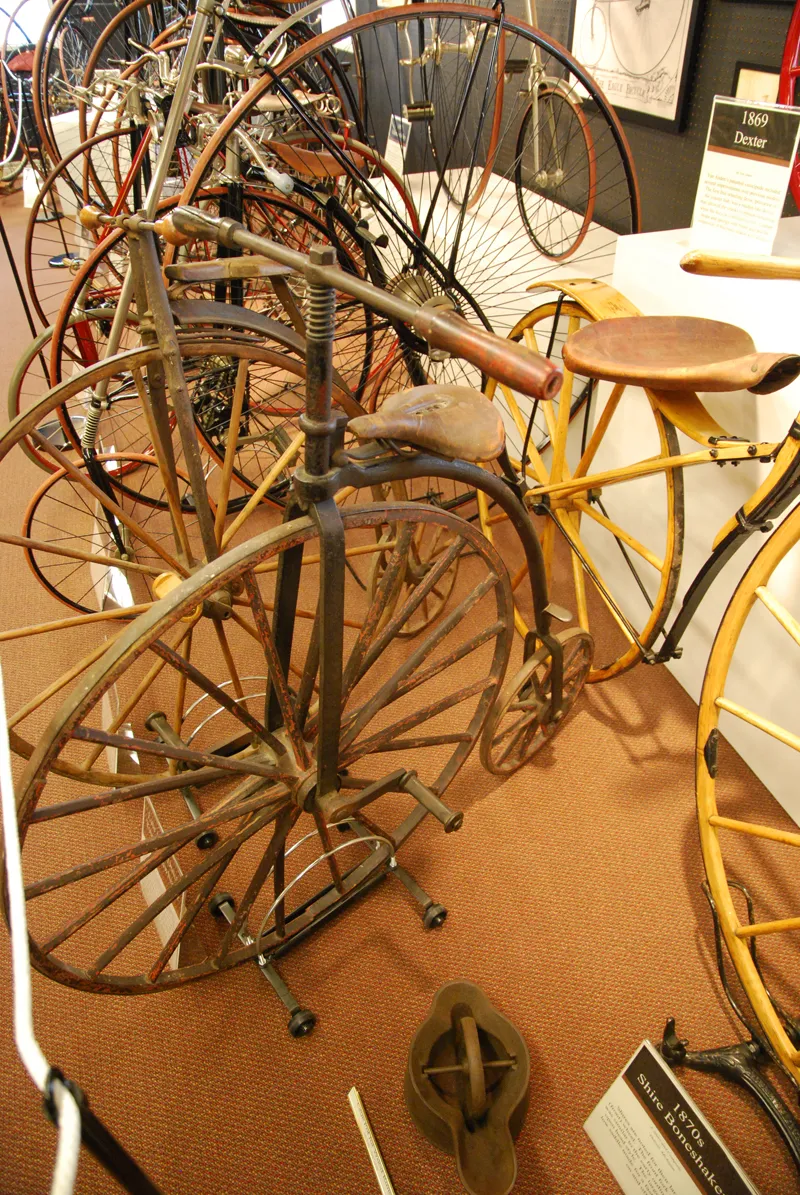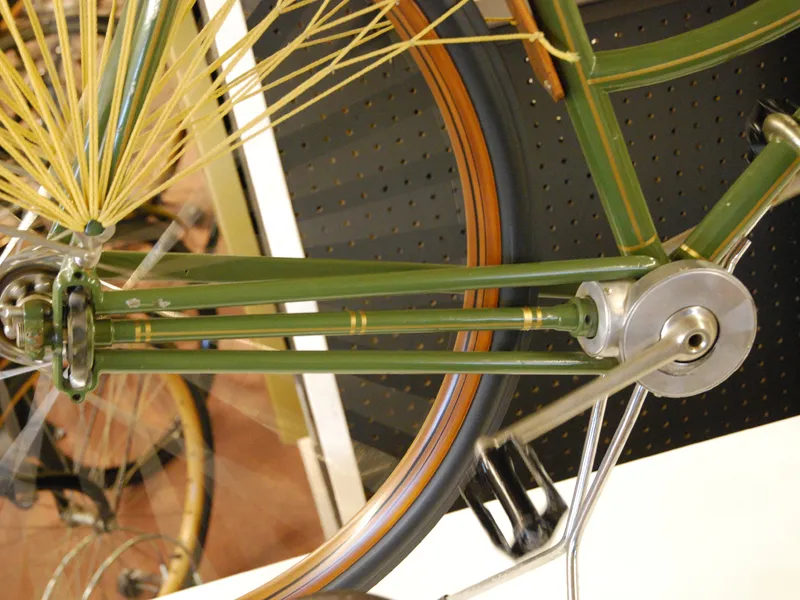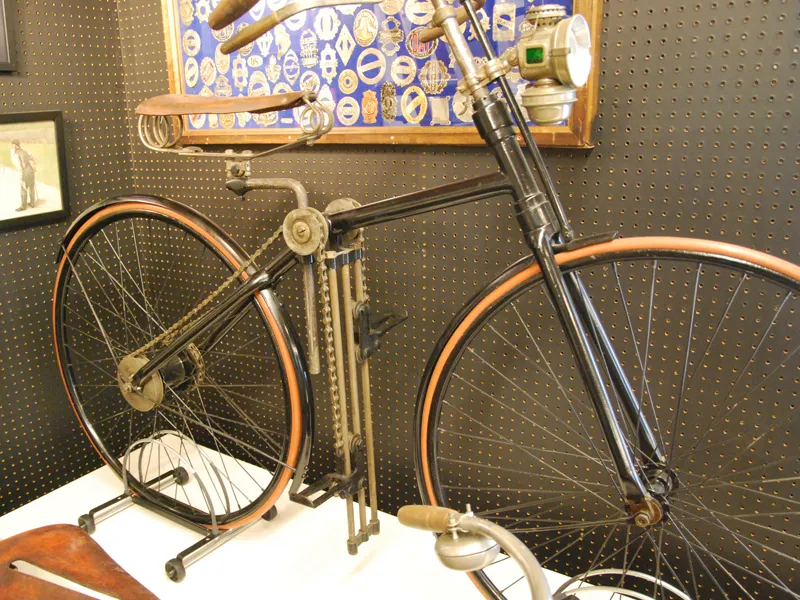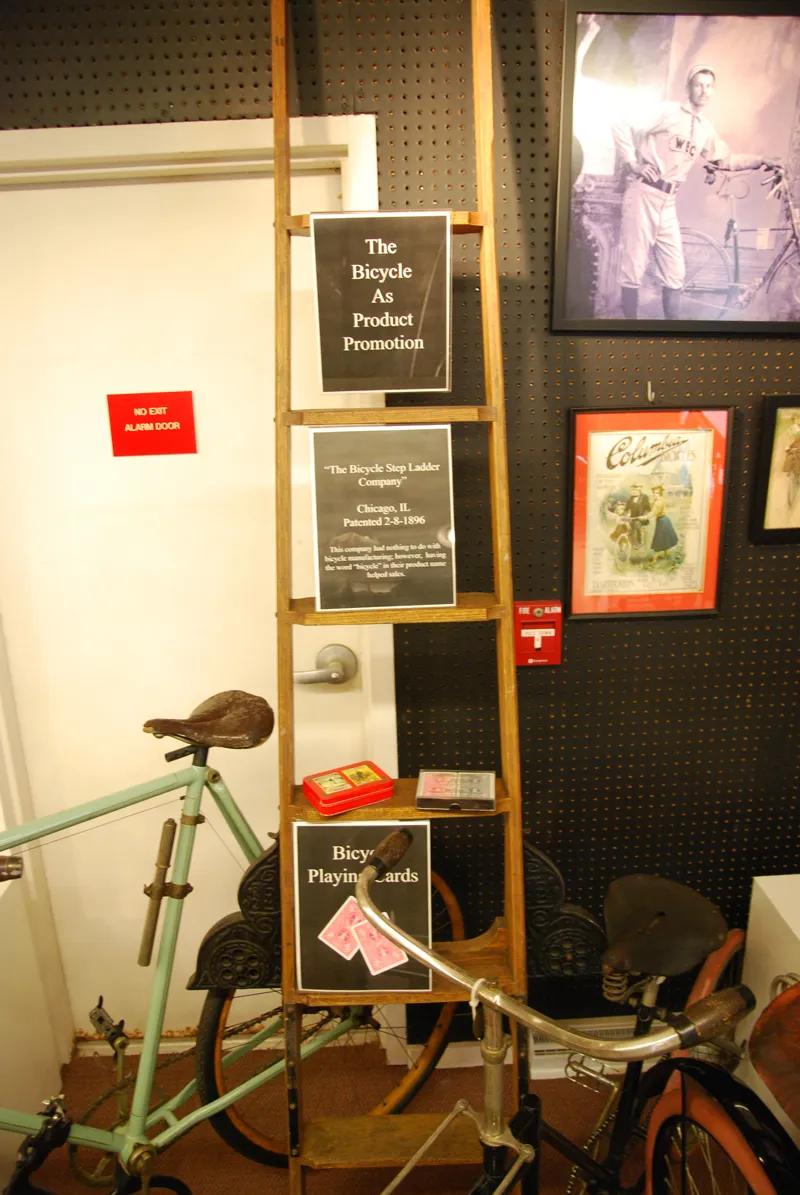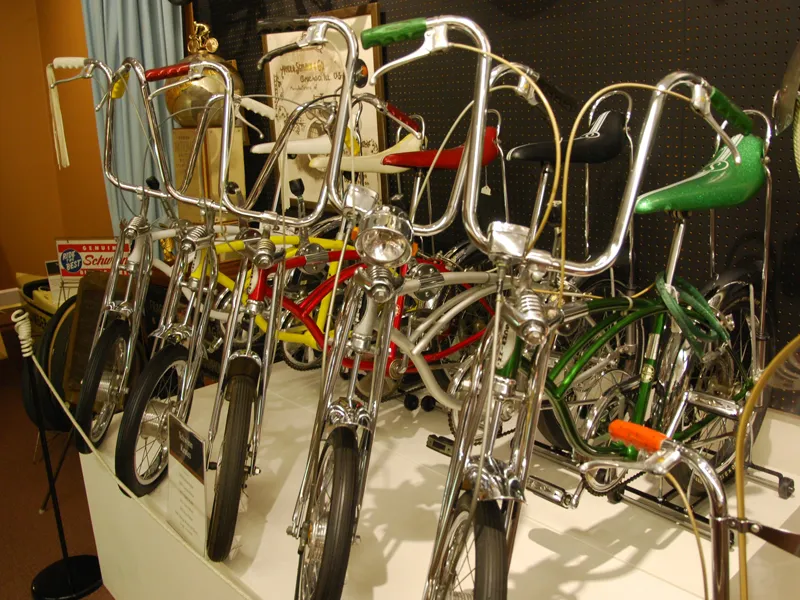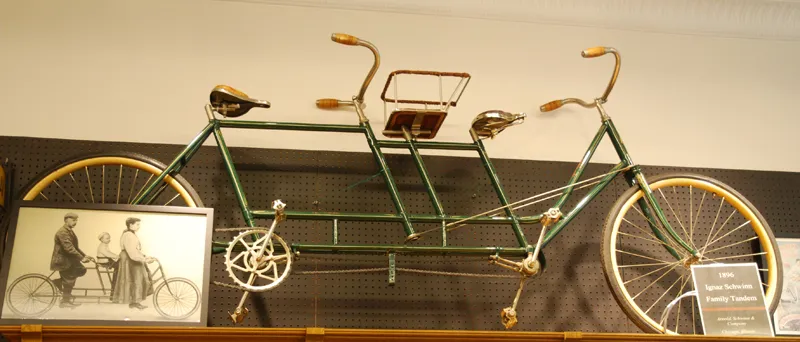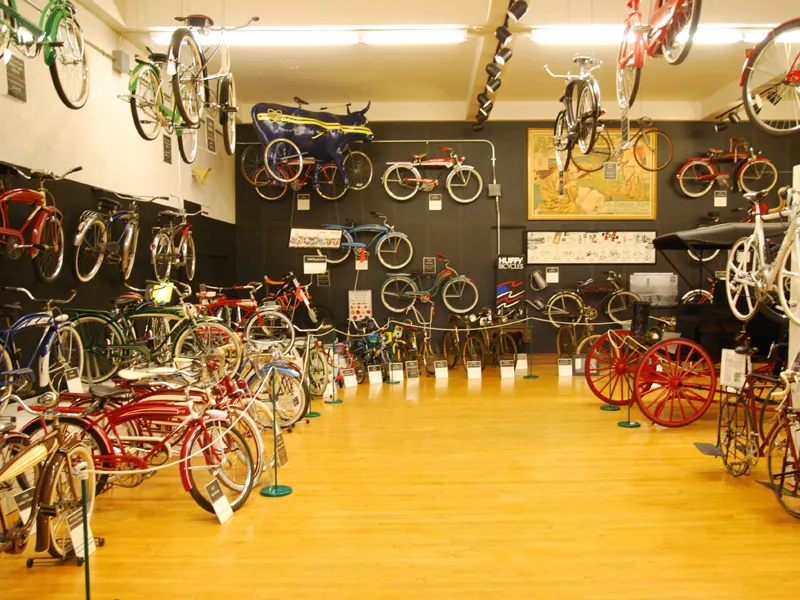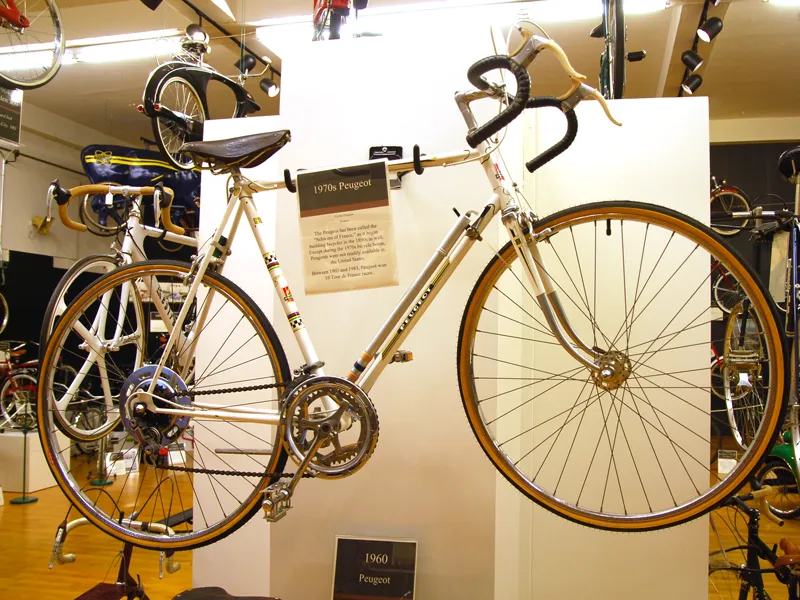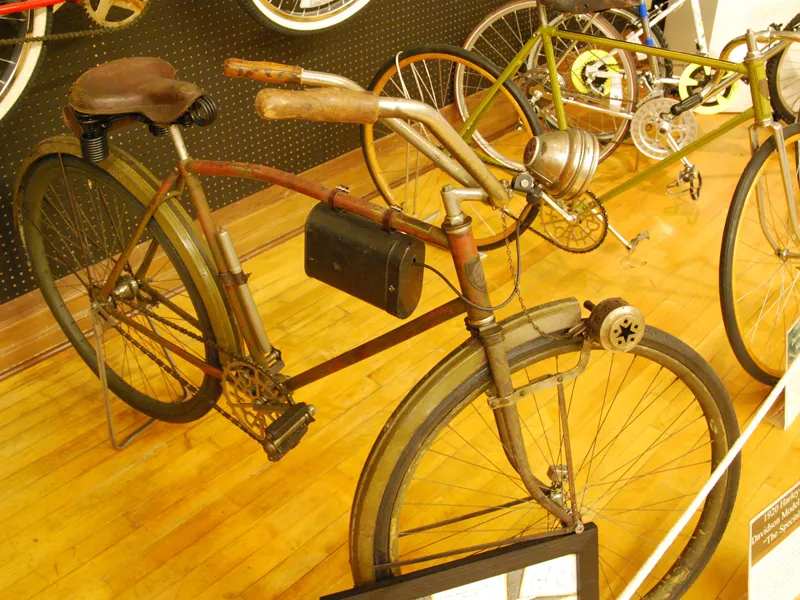While many American states claim to be the most bicycle friendly, Ohio, the Heartland State, could be the heart and soul of the American bicycle. Dayton, Ohio was home to the Wright Cycle Company, and about an hour north is where the Bicycle Museum of America is now located in New Bremen. The museum contains one of the largest collections of historic bicycles in the world, and much of the collection was obtained by Jim Dicke of Crown Equipment Corporation.
“The CEO of Crown Equipment was looking for a nice attraction for the town,” said Jim Elking of the Bicycle Museum of America. “The museum was founded in 1997 after the founders were able to acquire the Schwinn Family collection.”
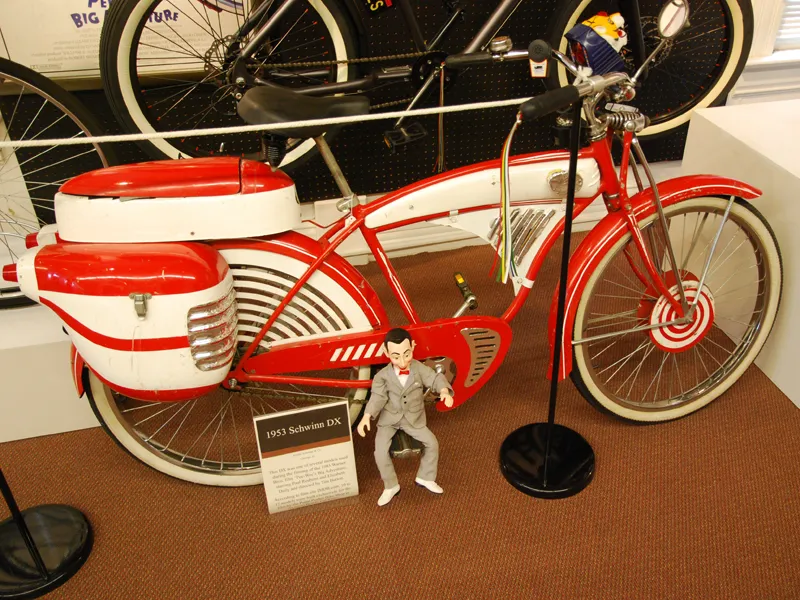
A 1953 “Pee Wee Herman” Schwinn DX
The well-known gathering of bicycles had previously been located at the Navy Pier in Chicago, but is now housed in the small downtown of New Bremen. From the original 100 or so pieces, the museum’s collection has grown to more than 300 pieces, which are displayed on three levels.
In fact, with so many bicycles and limited space, not every bicycle is on display at all times.
“We could fill a space three times the size of this museum,” Elking told BikeRadar. “But it is important to us to remain where we are.”
The Bicycle Museum of America is a key attraction in downtown and moving it from there isn’t something that the owners would care to do. Instead the museum tries to rotate its collection and find ingenious ways of squeezing in ever more bicycles. As a result bikes are literally hanging from the ceiling and mounted on virtually every wall.
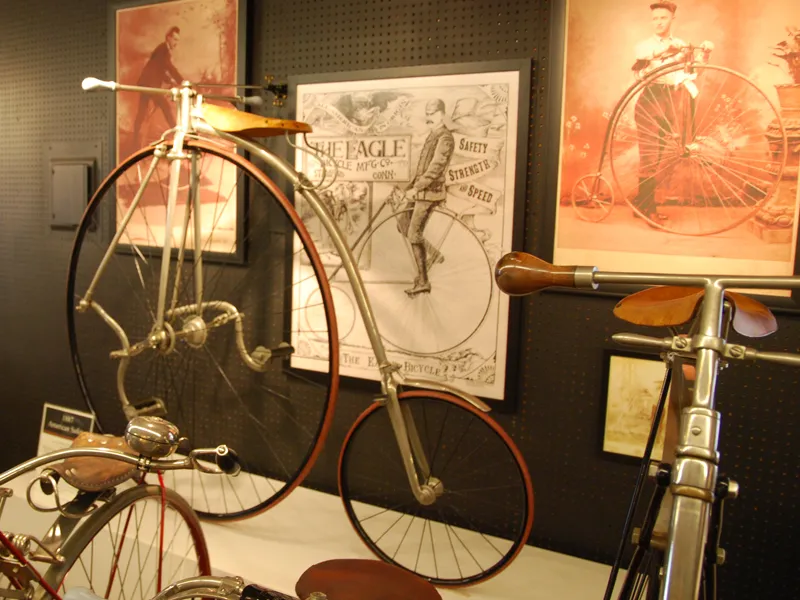
The Bicycle Museum of America showcases the full breadth of bike design over the decades
The heart of the collection is still very much based on the original Schwinn Collection with numerous models from the iconic brand. In recent years however the company has looked to expand, and has devoted much of the second floor to American-made bicycles – with models from Trek and Lynskey – while other sections are devoted to folding bicycles and even a small gallery of electric bicycles throughout the ages, as well as a selection of military bicycles. There is even a small collection of Harley Davidson-produced bicycles.
The main floor is home to an impressive collection of early high-wheel bicycles as well as numerous bicycle-related objects, including accessories, jerseys and tools from the past 140 years. The collection traces the evolution of the bike from the Draissine – of which the museum has an excellent replica – through to the early safety bicycles and beyond.
“In the early 20th century bicycles were very popular, probably more so than even today,” said Elking. “As a result there were countless products that were produced that were associated with the bicycle.”
These include such objects as the famous “Bicycle” brand of playing card.
Elking added that at the turn of the 19th to 20th century there were some 3,000 manufacturers in existence. At that time many bike shops actually made their own bikes for sale. The museum of course doesn’t have all these of these various models, but it does have in excess of 800 head badges from the various manufacturers.
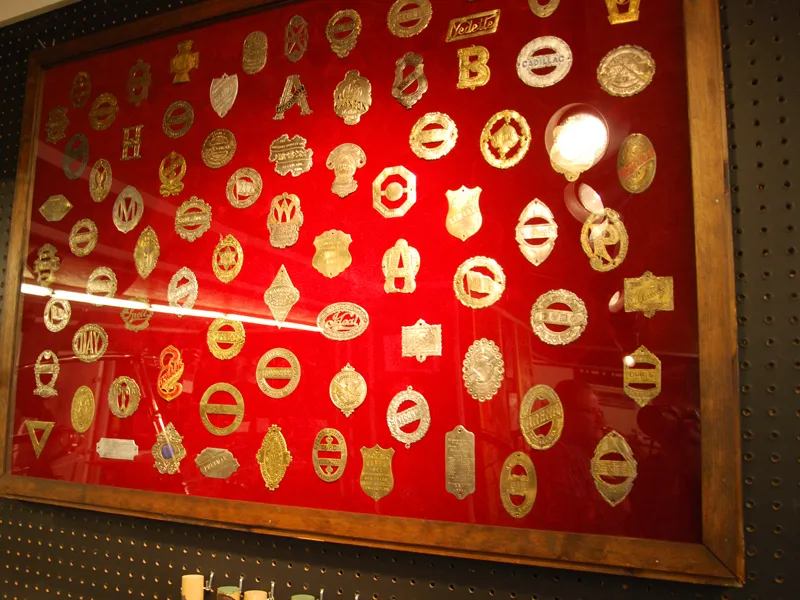
100 years ago there were thousands of small bike builders
The Bicycle Museum of America’s early collection also focuses on various drive systems, and Elking noted that fashion often played a role in early bicycle design. While today racers and casual riders may opt for tight-fitting apparel, that wouldn’t have been suitable in the 1880s and no one would have been caught dead wearing Lyrca. Thus some of the early bicycles were designed to accommodate the fashion of the day.
Beyond bicycles, the museum has a collection of gemstones and election badges and related memorabilia – other interests of the Dicke family – all as a way of adding culture to the Ohio town.
In fact, the museum is fully funded by the collection’s owners, and charges just $3 a person for entry.
“The admission fee isn’t enough to pay the electric bill for the air conditioning in the summer,” Elking noted. “And the admission is donated to a local charity.”
In the future Elking said he hopes that perhaps part of the collection could go on tour to a trade show such as Interbike to share the history of the two-wheeled machines.
